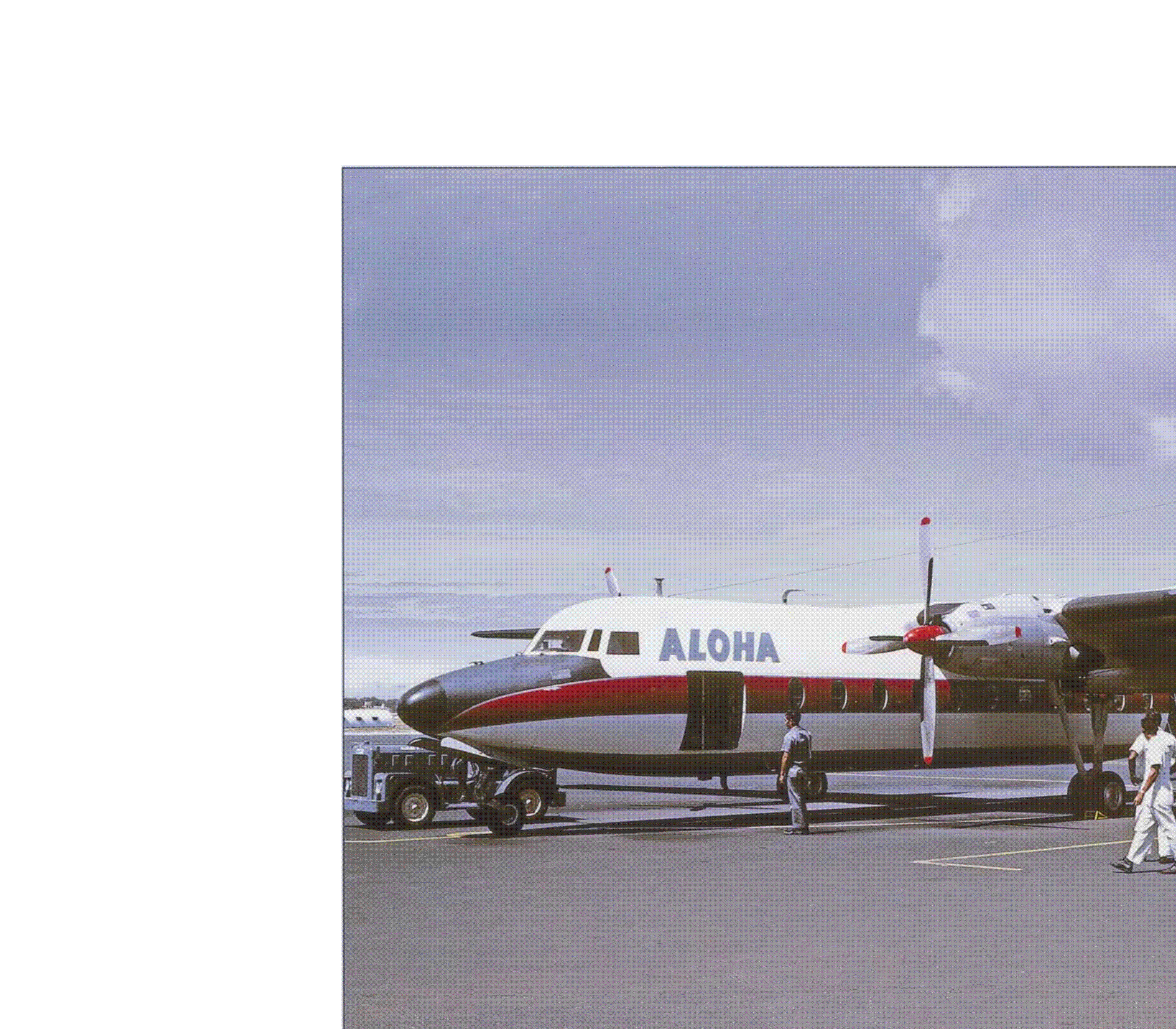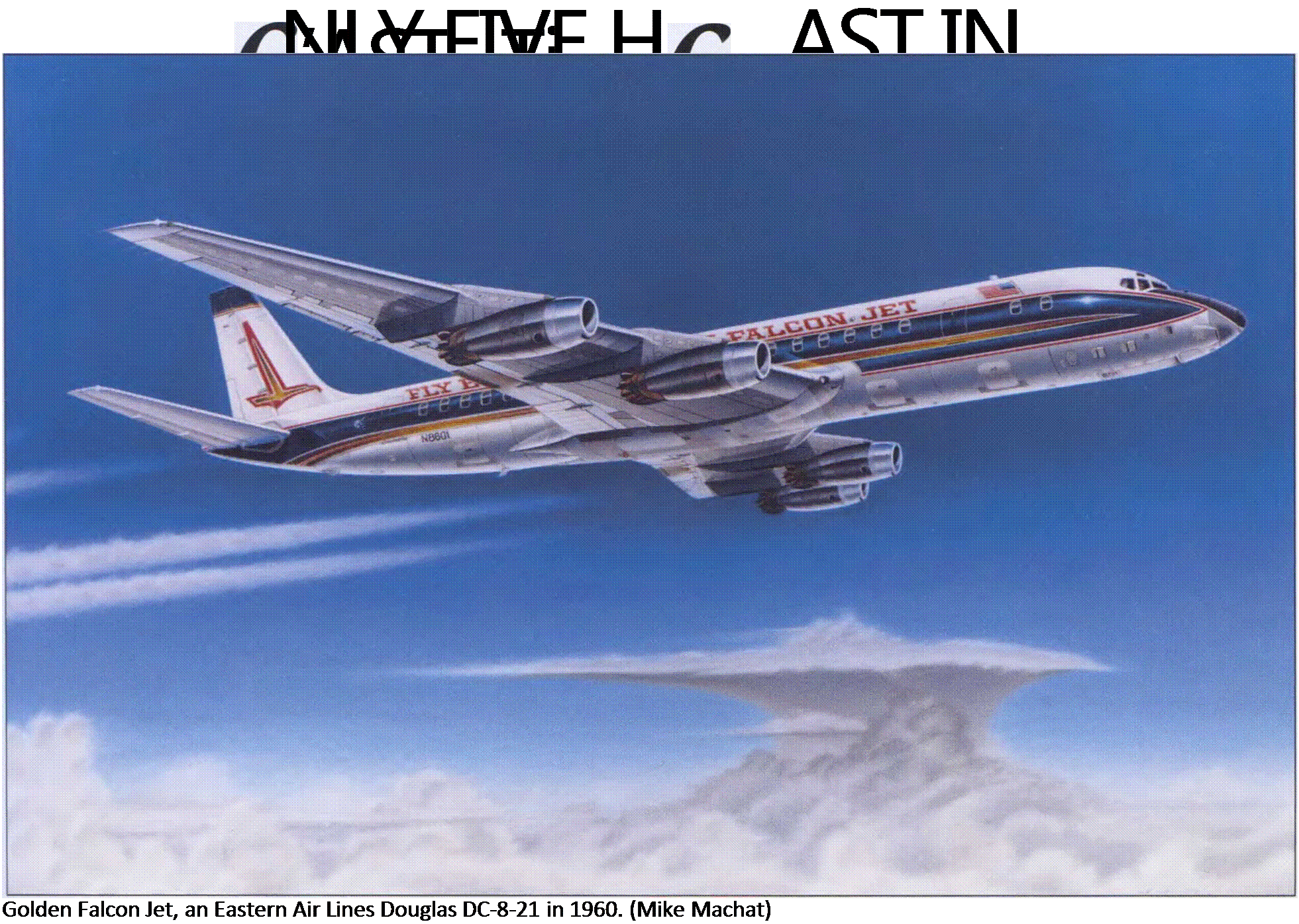WELCOME ABOARD THE FAIRCHILD F-27
 |
By Craig Kodera
From the moment you entered the new airplane, you were impressed with its self-contained air conditioning and smart, modern interior. Perhaps the biggest revolution in the cabin was the use of very large elliptical windows; installed to take advantage of the captivating aerial views this high-wing airplane afforded its passengers. Every seat was a good seat for enjoying these inflight vistas. One of the thrills about flying in the F-27 was the ability to watch the tall main landing gear retract and extend right outside your window.
In all the years of airliner history, truly, there was
nothing similar to the Rolls-Royce Dart engine. It had a screech, a warble, that filled ones entire body with a humming sensation unlike anything ever experienced in piston-engined aviation. From the ever-increasing whine during start-up, to the instantaneous application of takeoff power, the consistent, smooth pull of the Dart was more like driving one of today’s electric cars versus one run by pistons. The airplane didn’t pound its way into the air, but rather seemingly rode on a rail. Once airborne, flying in the Fairchild had a different “seat-of-the-pants” feel to it. Hanging from a wing rather than riding on top of the wing made for a unique and improved passenger experience. It always felt somehow smoother in that airplane.
|
T |

he Boeing 707, Douglas DC-8, and Convair 880 enter commercial service by the end of the 1950s, and the traveling public begins to experience the wonderment and excitement of jet flight for the very first time. Speeds and altitudes that were once highly coveted world records set by high-performance experimental military aircraft are now the domain of traveling businessmen and families going on vacation. The Jet Age has arrived.
The Commercial Jet Age Begins
As Boeing began delivering its 707 jetliners to the airlines, the type began route-proving flights to the first
cities scheduled to receive jet service. These operations were designed to familiarize not only flight crews but ground staff as well. Pan American Airways, which had the distinction of being the first carrier to have its livery appear on a 707, accepted the initial airplane on September 29, 1958, and began training flights carrying cargo and mail between New York and San Juan under the type’s provisional airworthiness certificate.
Noise restrictions at Idlewild Airport limited initial flights to daylight hours and limited the type’s maximum takeoff weight to 190,000 pounds, well below its 247,000-pound capacity. Similar restrictions were imposed at London’s Heathrow Airport and
noise regulations forced Pan Am to initially use Le Bourget Airport at Paris rather than the preferred Orly.
Even as Pan Am managers were preparing for jet service, they began discussing a lease arrangement with National Airlines that would allow National to operate Pan Am s 707s on a turnaround arrangement between New York and Florida during the winter months, with Pan Am gaining the right to lease future National DC-8s for transatlantic flights. With word of a possible stock exchange as part of the deal came rumors that it would be the first step in an eventual merger of the two airliners. Such speculation, as it turned out, was premature.
Although Pan Am became the first 707 operator, it was briefly upstaged by BOAC and its smaller de Havilland Comet 4s, which began operating between London and New York-Idlewild on October 4, 1958, a scant two weeks ahead of its U. S. competitor. As we learned earlier, neither the Comet 4 nor the 707-120 had reliable nonstop transatlantic range, but even with fuel stops, they shrank the travel time sufficiently to justify replacement of piston-engine nonstop service. Several months passed before larger 707-320s began crossing the Atlantic uninterrupted.
Over at American Airlines, managers were so eager to begin turbine-powered flights on long-haul segments that they contemplated interim transcontinental flights utilizing turboprop Lockheed 188 Electras until 707s could begin flying the routes. However, the plan was negated by a pilot strike that delayed service entry by both types, which then made their debuts within only three days of each other in January 1959.
Jet service was gradually added by other carriers as 707s continued to roll off the production line at Renton, Washington. Douglas DC-8s began serving the airlines in September 1959. By the end of December, the Jet Age was in full swing, with 75 pure-jet airliners in service, along with an even greater number of turboprop aircraft. Even factoring in the cost of new equipment, the jets could produce more airline revenue by completing four trips in the same time it took propliners to complete three, while easily enjoying double the passenger and cargo capacity.
Aircraft floodgates opened at manufacturers Boeing, Douglas, Fairchild, and Lockheed in order to more than triple the population of turbine fleets worldwide. Air travel was about to expand tremendously.










